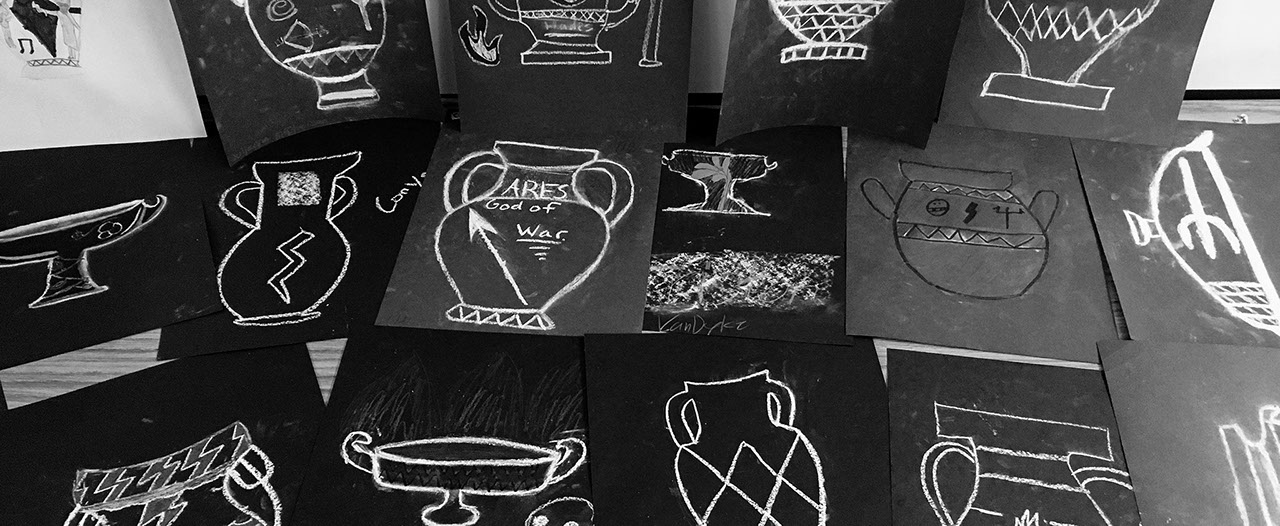
Video
Modules
Each video module below shows Oaklea Middle School ArtCore instructor Betsy Wolfston introducing her students to one of eight "Studio Habits of Mind," also known as the SHoM, that form a major pillar of the ArtCore model. These eight habits come directly from research-based teaching framework, Studio Learning, which describes the SHoM as follows:
1. Develop Craft: Learning to use tools, materials, and artistic conventions; learning to care for tools, materials, and one's work space.
2. Engage & Persist: Learning to embrace problems of relevance within the art world and/or of personal importance, and to develop focus conducive to working and persevering at tasks.
3. Envision: Learning to picture mentally what cannot be directly observed, and imagine possible next steps in making a piece.
4. Express: Learning to create works that convey an idea, a feeling, or a personal meaning.
5. Observe: Learning to attend to visual contexts more closely than ordinary "looking" requires, and thereby to see things that otherwise might not be seen.
6. Reflect: Learning to think and talk with others about an aspect of one's work or working process, and learning to judge one's own work and working process and the work of others.
7. Stretch & Explore: Learning to reach beyond one's capacities, to explore playfully without a preconceived plan, and to embrace the opportunity to learn from mistakes.
8. Understand (Arts) Community: Learning to interact as an artist with other artists (i.e., in classrooms, in local arts organizations, and across the art field) and within the broader society. Arts is in parenthesis here as it can easily be switched with other disciplines, like science or history.
The SHoM are derived from the real-life habits that artists and creators depend on to engage in meaningful work and be successful. Once learned, they can be applied to any discipline.
See how Betsy Wolfston teaches each of the SHoM below. Feel free to adapt the SHoM to your needs.
A curriculum that includes lesson plans and activities can be downloaded here.

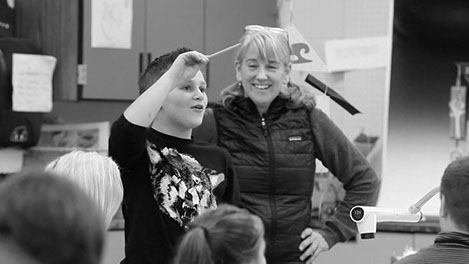
What is ArtCore?
Teachers and students at Oaklea Middle School in Junction City, Oregon describe how ArtCore—a research-based arts integration model that improves students' critical thinking and problem-solving skills while building confidence, motivation, and grit—has transformed the school's sixth grade cohort.
A curriculum that includes lesson plans and activities can be downloaded here.
Watch Module
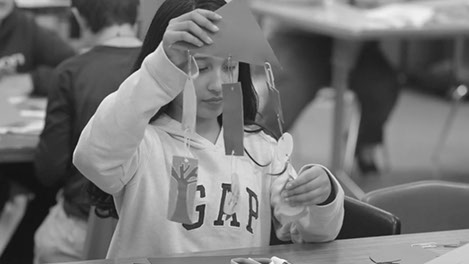
Understand the World
This studio habit was originally named "Understand (Arts) Community," but Wolfston changed its name to "Understand the World" to make the concept more universal. This SHoM encompasses learning about culture and history, current practices and innovation, and interacting with others through various art forms.
Wolfston realized that in order to understand the world, first her students had to understand themselves. Using paper, glue, scissors, paper clips, a hole punch, and coloring tools, students created personalized mobiles reflecting their values and the studio habits they connected with the most.
A curriculum that includes lesson plans and activities can be downloaded here.
Watch Module

Stretch & Explore
When students Stretch and Explore, they discover new interests, test ideas, and become comfortable with making (and learning from) their mistakes. For this SHoM, Wolfston's class tried their hands at blind contour drawing, a creative exercise in which the artist draws the contour of their subject—in this case, a hand or a peer—without looking at his or her paper.
The activity not only taught the class the value of hand-eye coordination, but also put them at ease. "[The activity] starts breaking down the judgment of 'I can't draw,' says Wolfston. "It gets kids to actually stretch into that arena of just enjoying the experience of drawing instead of being obsessed with the judgment of what a drawing looks like."
A curriculum that includes lesson plans and activities can be downloaded here.
Watch Module

Reflect
"Reflect" doesn't just refer to the act of assessing one's own work and work process; reflection also means having the ability to communicate those ideas to others. To Wolfston, this made Reflect the perfect SHoM through which to introduce the practice of critique. First, the class reviewed what Wolfston termed the "rules of critique": be kind, be helpful, and be respectful. Establishing guidelines like these pushes students to offer thoughtful feedback and responses.
Once the rules were established, students learned the art of " ," a relaxing, low-pressure method of illustration in which the artist fills in a shape with repeating patterns such as zig zags, concentric circles, or stripes. The class practiced Zentangle drawing in accordion journals, which can be easily made using paper, scissors, and glue.
A curriculum that includes lesson plans and activities can be downloaded here.
Watch Module
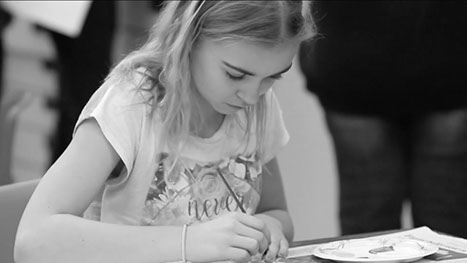
Observe
"This studio habit of mind slows you down and puts you in touch with your five senses," says Wolfston. Combining her lessons on color theory into a single activity, Wolfston asked each of her students to create 100 colors with an artist's palette of just the basics: yellow, red, blue, black, and white. For her class, this meant paying attention to the ratios of paint needed to express specific colors and color values.
"If you learn to observe more in life, it just gets richer what you start seeing, what you start knowing," Wolfston says.
A curriculum that includes lesson plans and activities can be downloaded here.
Watch Module

Express
The desire for self-expression is universal, and often associated with art, making Express perhaps the most intuitive and recognizable of the SHoM. Wolfston used the moment to introduce her class to the Mexican artist Frida Kahlo, who began painting self-portraits after a bus accident left her bedridden for three months and unable to bear children. The authenticity of Kahlo's art created the perfect jumping off point for the planned class activity. With donated magazines, scissors, and glue, students cut and pasted together their own Kahlo-inspired collages. For many, it was an exercise in personal empowerment as much as creative expression.
A curriculum that includes lesson plans and activities can be downloaded here.
Watch Module
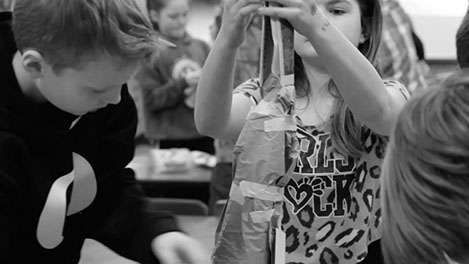
Envision
As children get older, they can sometimes feel pressured to leave their imaginations at the door. Daydreaming, for example, is discouraged or often dismissed as unproductive. Wolfston rejected the notion that imagination was something just "for kids" by tying it into the SHoM of Envision. In teams, students were challenged to build towers with newspapers and tape—the taller the tower, the better. The only rule was that the towers had to stand up on their own. Teams sketched out potential designs on paper, and once they reached a consensus, quickly got to work.
"What I love about this project is that it allows competition to come in, [but] in a very friendly, kind way," says Wolfston. "I think it puts competition up on its side."
A curriculum that includes lesson plans and activities can be downloaded here.
Watch Module
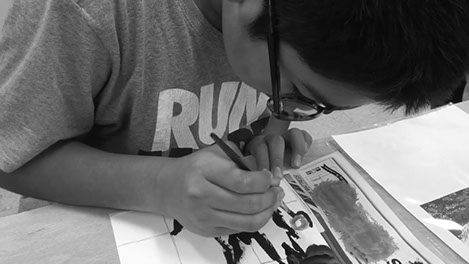
Engage & Persist
This week's SHoM centered around qualities of motivation and perseverance, so Wolfston felt it was an appropriate time to present her students with more challenging material. The class spent the first half of the period discovering Impressionism and the reviewing the life and work of the troubled Dutch artist Vincent Van Gogh. Following the lesson, students employed principles of color theory and composition, including the "rule of thirds"—in which the subject of an image is positioned at or along the intersections of guidelines, rather than centering the subject—to recreate Van Gogh's works. While difficult, the assignment pushed students to overcome frustrations and produce a finished piece of art.
A curriculum that includes lesson plans and activities can be downloaded here.
Watch Module

Develop Craft
The word "craft is often associated with do-it-yourself decorative projects, but it also conveys an expert level of strength or skill. The SHoM puts an emphasis on learning in its own definition. Developing craft means learning to use tools, materials, and artistic conventions, as well as learning to care for tools, materials, and one's work space. Wolfston considered this SHoM a foundational skill, which is why it's often taught before the others. Wolfston typically teaches the SHoM first in descending order, then reviews the SHoM with new activities in ascending order, as shown at Inspiring Teaching, to reinforce what students have learned.
The class spent their last week of ArtCore immersed in their final projects. Inside folded "starburst" or "lotus" books (video tutorial ), students completed assignments designed to strengthen and evaluate their mastery of the SHoM. "As an artist you're so comfortable knowing how to pull things out, get things going, meet a deadline, create something, deliver a final product, deliver a final good, and so you have no problem with understanding process," Wolfston says. "I'm not sure many other subjects can teach process as well as art can."
A curriculum that includes lesson plans and activities can be downloaded here.
Watch Module